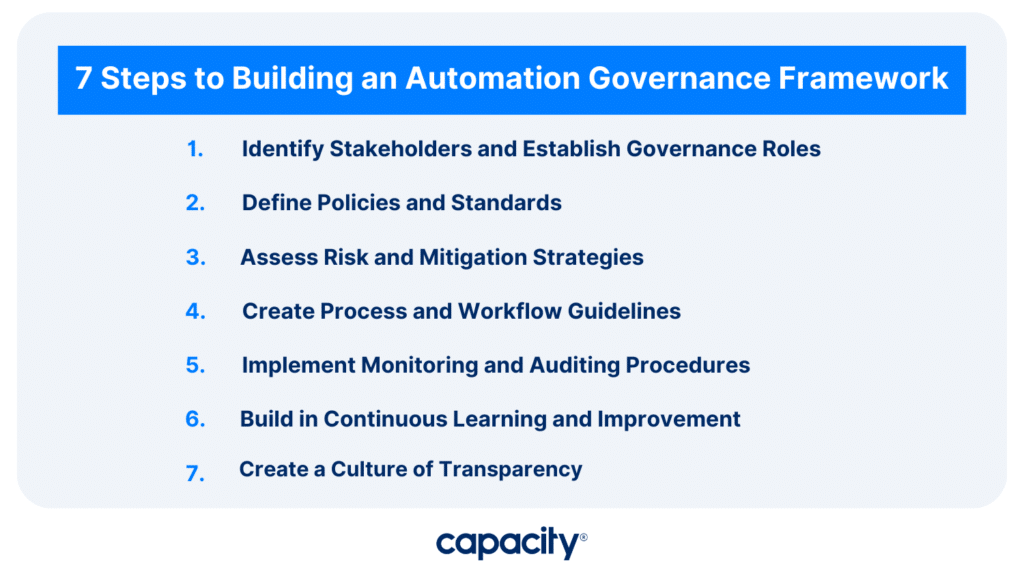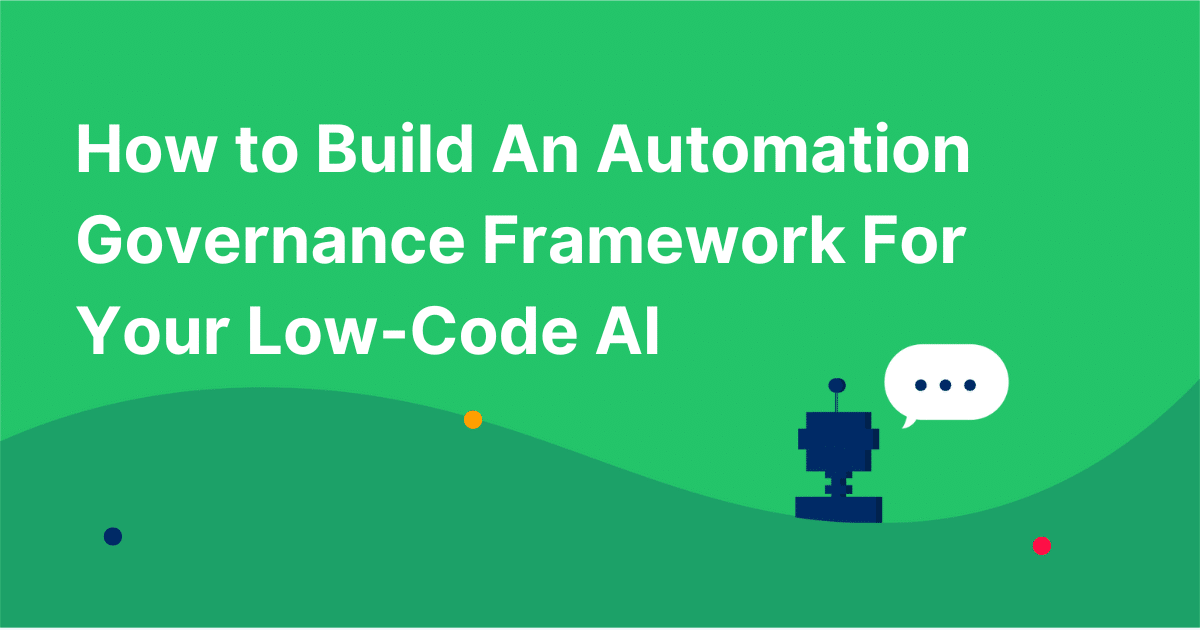The adoption of low-and no-code automation technologies has revolutionized the way organizations implement and run AI and automation programs. This shift has significantly reduced the dependency on IT professionals, allowing business functions to integrate automation independently. The benefits of automation are undeniable and necessary for staying competitive. However, the rapid pace of democratized automation brings certain risks, including the potential for inadequate controls, compliance challenges, and issues related to interoperability. Through this comprehensive 7-step roadmap, we will explore how organizations can mitigate risks and ensure the successful implementation of automation governance.
Understanding Automation Governance

Automation governance refers to the set of policies, practices, and guidelines put in place to effectively manage and oversee automation initiatives within an organization. It ensures that automation is aligned with strategic objectives, complies with regulatory requirements, and operates efficiently. By establishing a robust automation governance framework, organizations can reap the benefits of automation while mitigating associated risks.
Automation governance is the process of establishing a structured framework to guide and govern the implementation, management, and oversight of automation initiatives within an organization. It encompasses defining roles and responsibilities, setting policies and standards, assessing risks, and implementing monitoring and auditing procedures.
Implementing automation governance offers several benefits to organizations. It provides clarity and structure, ensuring that automation initiatives align with business goals and comply with regulations. Additionally, automation governance facilitates collaboration between IT and business functions, promoting cross-functional alignment and a shared understanding of automation initiatives. Furthermore, it enables organizations to manage risks effectively, monitor performance, and continuously improve automation processes.
7 Steps to Building an Automation Governance Framework

The process of building an automation governance framework involves seven key steps. Firstly, it is crucial to identify stakeholders and define their roles and responsibilities. Secondly, comprehensive policies and standards should be established to govern automation initiatives. The next step involves assessing risks and developing mitigation strategies.
Clear process and workflow guidelines are then created to ensure consistency and efficiency. Monitoring and auditing procedures are implemented to track performance and maintain compliance. A culture of continuous learning and improvement is fostered to drive innovation. Lastly, transparency is emphasized through open communication and collaboration. By following these steps, organizations can establish an effective governance framework for automation.
Step 1: Identify Stakeholders and Establish Governance Roles
The first step in building an automation governance framework is to identify key stakeholders and define their roles and responsibilities. This includes representatives from IT, operations, compliance, and other relevant departments. By establishing clear governance roles, organizations can ensure accountability, transparency, and effective decision-making throughout the automation lifecycle.
Step 2: Define Policies and Standards
Developing comprehensive policies and standards is essential for governing automation initiatives. These should cover aspects such as data security, privacy, ethics, and compliance. Policies should be aligned with industry best practices and regulatory requirements to mitigate risks and ensure the responsible use of automation technologies.
Step 3: Assess Risk and Mitigation Strategies
Automation governance should include a robust risk assessment process. Identify potential risks associated with automation initiatives and develop mitigation strategies to address them. This may involve assessing data integrity, evaluating system vulnerabilities, and establishing contingency plans to handle unforeseen circumstances.
Step 4: Create Process and Workflow Guidelines
Establishing clear process and workflow guidelines ensures consistency and efficiency in automation implementation. Define standardized procedures for developing, testing, deploying, and maintaining automated processes. This includes documenting workflows, defining approval processes, and establishing change management protocols.
Step 5: Implement Monitoring and Auditing Procedures
Monitoring and auditing play a vital role in automation governance. Implement tools and processes to track automation performance, measure key metrics, and identify potential issues or anomalies. Regular audits help ensure compliance, identify areas for improvement, and maintain the integrity of automated processes.
Step 6: Build in Continuous Learning and Improvement
Automation governance should emphasize a culture of continuous learning and improvement. Encourage knowledge-sharing among teams, document lessons learned from automation projects, and foster a collaborative environment for exploring new automation opportunities. Implement feedback loops to capture insights and drive iterative enhancements.
Step 7: Create a Culture of Transparency
Transparency is a cornerstone of effective automation governance. Encourage open communication and collaboration between IT, operations, and other stakeholders involved in automation initiatives. Establish mechanisms for sharing information, reporting progress, and addressing concerns. This fosters trust, increases awareness, and ensures a shared understanding of automation activities.
As organizations embrace the democratization of automation, the need for a robust automation governance framework becomes paramount. By following the 7-step roadmap outlined in this article, IT professionals and operations teams can establish a clear and effective governance structure. Automation governance ensures that automation initiatives align with strategic objectives, comply with regulations, and operate efficiently.
Through stakeholder engagement, defined policies and standards, risk assessment, process guidelines, monitoring procedures, continuous improvement, and a culture of transparency, organizations can navigate the challenges of automation adoption and drive successful outcomes. Embrace automation governance and unlock the full potential of automation while minimizing risks and maximizing its benefits. Try Capacity for free now!

Automate Your Work
Capacity’s enterprise AI chatbot can help:
- Answer FAQs anytime, anywhere
- Find relevant documents within seconds
- Give surveys and collect feedback





